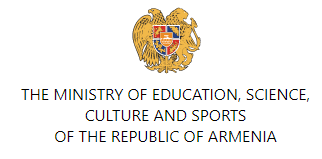Urartu and Etiuni: Archaeology of the Iron Age of Armenia
-
25 April 2023
10:00 AM - Lecture hall A21 (Arna Novaka 1, building A, 2nd floor)
During the Iron Age, important socio-political and cultural processes took place in the territory of the Armenian Highlands. In addition, aggressive advancement by the Assyrian Empire created factors for unification. Two major powers had formed in the Armenian Highlands, one led by the mighty confederation of Etiuni and the other by a unit between Lakes Van and Urmia in the south, known in Assyrian sources as Urartu. While the Assyrians called this area Urartu, the local kings themselves called their country Biaina, and in the Bible it was mentioned as the land of Ararat.
The Etiuni confederation occupied almost the entire territory of the present-day Republic of Armenia. The name of one of the kings of Etiuni that has survived to our times was Diutsini which is interesting because it translates from Armenian to mean “divine born” and is a version of the Greek name Diogenes.
Urartu become one of the most powerful players in the first half of first millennium BCE in the Ancient Near East. Even during the first half of the 8th century BCE was the time of Urartian hegemony over mighty Assyrian empire. Urartian kingdom was well-organized, militarized structures with its well-developed hydraulic system, communication etc.
The struggle between Etiuni and Urartu. Starting particularly from the end of the 8th century B.C., the worlds and cultures of Etiuni and Urartu gradually began to merge.
Recent archaeological excavations and subsequent investigations changed many of our ideas on Urartu and the so-called Urartian standards. How was the Biainili kingdom formed and transferred to the Urartian empire? What are the main characteristic features of Urartu? Whether the “Urartian world” was limited to just the walls of fortresses or it had spread beyond to outer towns. In this respect, it is important to re-examine the issues of mutual relations between the Urartian and local (for example Etiuni) worlds and traditions, along with their reflection to the post-Urartian period (end of VII century-VI century B. C.). In this case, the recent archaeological excavations of Urartian sites (Erebuni, Karmir blur, Solak 1, Aramus, Odzaberd etc.) provide new perspectives and ideas for the rethinking of “Urartu”. It is plausible to hypothesize that the expansion of the well-organized and militarized Bianili kingdom against the tribal confederation of Etiuni ended with syncretization of the dominating “Etiunian features”.
Miqayel Badalyan is the director of the Erebuni History and Archaeology Museum in Yerevan. He is engaged in archaeological research on the ancient empire of Urartu and surrounding regions. He studies Urartian iconography, religion, and historical and cultural developments in the post-Urartian period. He is currently leading an Armenian archaeological expedition to the fortresses of Erebuni and Odzaberd (Tsovinar). He is also involved in conducting Armenian-French research at the fortress of Erebuni and Armenian-Austrian excavations at Karmir Blur. He has also participated in numerous archaeological excavations in Armenia, Lebanon, and Iran. He has presented the results of his research at multiple conferences and lectures in Armenia and abroad (USA, Russia, Poland, Austria, Hungary, Iran, Georgia, Lebanon, Moldova, Italy, and France). He lectures at the Armenian State Pedagogical University and Yerevan State University. He is the author or co-author of about thirty scholarly articles on the archaeology and religion of the Urartian Kingdom and its historical and cultural heritage. He is also co-author of the book Bianili-Urartu. Gods, Temples, Cults (in Armenian), published in Yerevan.

Loading map…
Share event


